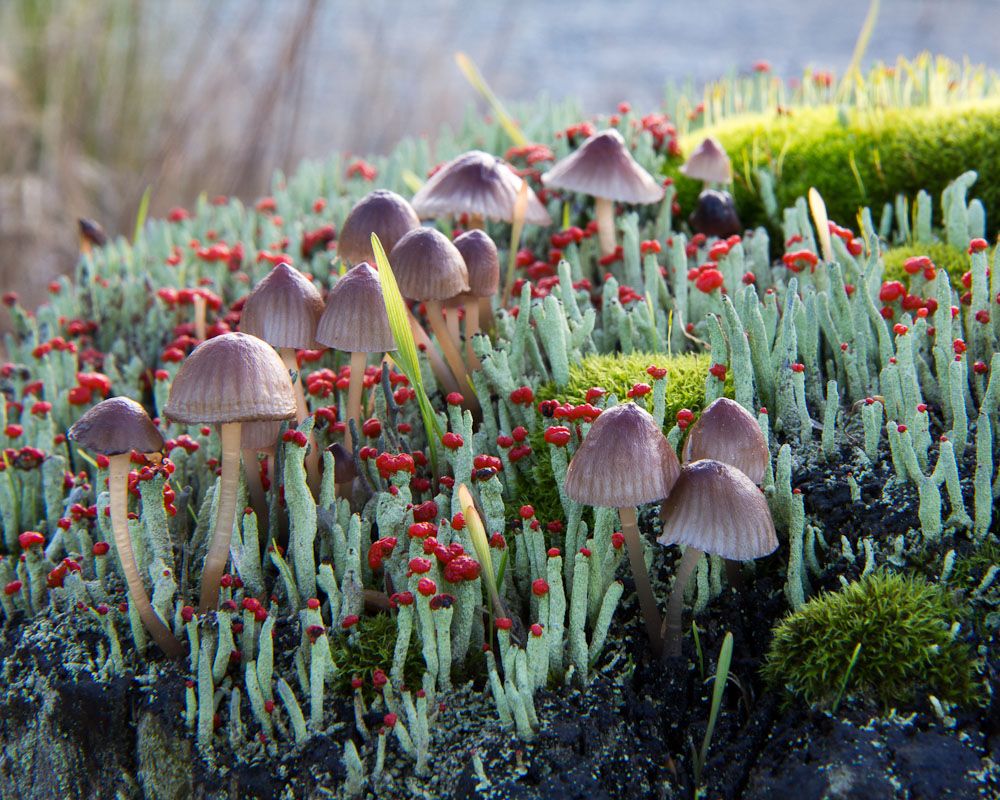The allure of nature has beguiled humanity for centuries, and its magical manifestations are closer to home than many often realize. Among the most intriguing components of the natural world are mushrooms, those enigmatic fungi found scattered throughout our neighborhoods and local green spaces. While many perceive mushrooms as mere culinary additives or quirky garden dwellers, they hold a scintillating tapestry of ecological significance and mystical lore that merits deeper exploration. As we contemplate the future, the evolving relationship between humans and nature emphasizes the need for interaction—encouraging us to see these life forms not just as flora, but as symbols of a vibrant, interconnected ecosystem.
1. **The Ecology of Mushrooms**: Understandably, mushrooms exist as the reproductive structures of various fungi, and they fulfill a crucial role within their ecosystems. They engage in a symbiotic relationship with trees and plants through mycorrhizal networks, which facilitate the exchange of nutrients. This partnership enhances the growth of plants while simultaneously providing fungi with carbohydrates. In the future, as urban expansion threatens biodiversity, the understanding of mycology (the study of fungi) may inspire innovative conservation efforts that harness the adroit skills of mushrooms to rehabilitate and safeguard local habitats.
2. **Seasonal Transformations**: Nature unfolds in cyclical beauty, and mushrooms epitomize this phenomenon. Most fungi flourish in damp conditions and can be spotted after rain showers, popping up in local forests, parks, and even gardens. The diverse species you might encounter are incredibly varied, leading one to marvel at their colors and shapes. For instance, the vibrant orange of Chanterelles contrasts sharply with the muted greys of the ubiquitous Common Mushroom. Seasonal variation not only characterizes the lifecycle of mushrooms but also reflects broader ecological changes that may accompany climate fluctuations. Understanding these shifts provides an essential glimpse into the health of local ecosystems—vital knowledge as we stride into an uncertain climate future.
3. **Culinary Delights**: Historically, mushrooms have found favor on gourmet menus, celebrated for their complex flavors and textures. But beyond mere gastronomy, they possess a deeper significance in various cultures, often associated with healing and spiritual practices. The incorporation of edible fungi into local diets represents a sustainable approach to nutrition, one that aligns with a growing trend toward organic and local food sourcing. By promoting foraging and education around edible mushrooms, communities can cultivate greater self-sufficiency and resilience—a necessary pursuit in an increasingly precarious food system.
4. **Medicinal Properties**: Fungi are not limited to the culinary world; many varieties boast remarkable medicinal properties. Reishi, Lion’s Mane, and Cordyceps have been lauded in traditional medicine systems for their potential health benefits, which range from bolstering immune function to enhancing cognitive capabilities. With the burgeoning interest in holistic health practices, exploring these local wonders may usher in a new chapter of wellness. As people engage more with their surroundings, they might rediscover these ancient allies, fostering a more profound respect for natural healing traditions.
5. **Aesthetic Inspiration**: The delicate beauty of mushrooms also extends to aesthetic realms. Artists and photographers, captivated by the ethereal elegance of these fungi, often immortalize them in their works. The intricate patterns, unexpected colors, and unique forms of mushrooms lend themselves to creative exploration, inspiring local artists to engage with their environment in novel ways. As communities assume stewardship over their neighborhoods, they can create galleries and public art projects that highlight the flora of their regions, including the subtle intricacies of mushrooms—potentially instilling a renewed appreciation for local biodiversity.
6. **Environmental Indicators**: The presence and health of mushroom populations can serve as a barometer for ecological balance within a local environment. Certain species are known to thrive only under specific conditions, making them poignant indicators of soil health and air quality. By observing these indicators, neighborhoods can proactively address environmental issues, fostering resilience amidst unforeseen challenges. Furthermore, integrating public education programs that focus on the ecological role of mushrooms could galvanize community involvement in conservation efforts, empowering individuals to take action.
7. **Fostering Community and Connection**: Engaging with mushrooms fosters a sense of community. Local foraging clubs and workshops can flourish as people come together to learn about the diversity of fungi in their areas. These communal gatherings not only promote ecological awareness but also share knowledge that strengthens bonds between individuals. As neighborhoods increasingly seek a reconnection with nature, these initiatives can lay the groundwork for collaborative sustainability efforts—redefining community within the context of the natural environment.
8. **Future Expectations**: The advent of technology might augment the exploration of the fungal kingdom. Apps that enable individuals to identify mushroom species can democratize knowledge and encourage responsible foraging. Moreover, as genetic research illuminates the potential uses of mushrooms in bioremediation and waste reduction, communities may harness these innovations for a more sustainable future. Expectation looms for a world where local ecosystems play a significant role in contributing to global sustainability efforts, underscoring the importance of magical mushrooms.
In the contemplative lens of future possibilities, mushrooms emerge not only as a fascinating aspect of our neighborhoods but as vital threads woven into the fabric of a sustainable, interconnected world. Their presence is a reminder that nature often provides the solutions we seek. As we embark on this journey of rediscovery, let us pay homage to these humble yet extraordinary organisms and their potential to inspire change within our communities and beyond.









Leave a Comment